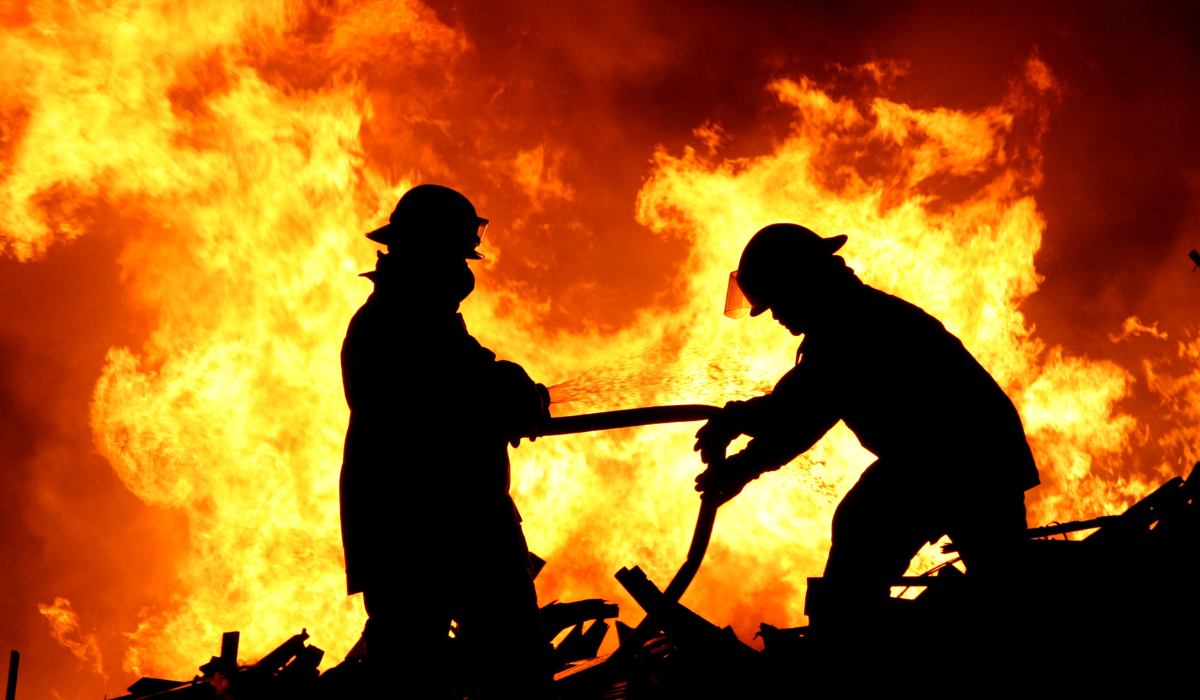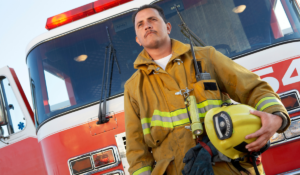Occupational and environmental emergencies not only threaten the lives & health of the public, but those who respond, as well. Now, OSHA hopes to adjust the requirements regarding health monitoring for emergency responders.
Emergency responders are normally the first on the scene of an emergency, and range from police, fire, & emergency health personnel, to community volunteers.
However, as these selfless individuals work to bring emergencies under control to save lives and property, they may also be exposed to potentially harmful conditions and contaminants.
Here are the latest developments in occupational health for emergency responders as OSHA unveils its proposed rule released on February 5, 2024.
So here, we’ll delve into OSHA’s proposed changes, which aims to provide comprehensive protection for those who bravely serve our communities.
Let’s break it down.
Related Article: Overcoming the Dangers of Firefighting
Related Article: 5 Key Steps to Workplace Emergency Preparedness

Understanding OSHA’s Proposed Rule
OSHA’s proposed rule aims to address the diverse range of hazards encountered by emergency responders. Currently, these responders are subject to a patchwork of hazard-specific standards or State Plan regulations, leaving gaps in their protection.
Moreover, existing regulations fail to align with the Department of Homeland Security’s National Incident Management System.
- Read the Federal Register Notice on the Emergency Response Standard
The Need for Comprehensive Standards
The Notice of Proposed Rule Making (NPRM) highlights the inadequacy of existing standards, emphasizing their outdated nature and lack of comprehensiveness.
OSHA recognizes the necessity for a unified and robust standard that adequately addresses the evolving challenges faced by emergency responders in the field.
Key Changes in the Proposal
One significant aspect of the proposal is the replacement of the outdated standard on fire brigades.
In order to address this issue, OSHA aims to incorporate major changes in performance specifications for protective clothing/equipment and safety and health practices.
These updates reflect advancements accepted by the emergency response community and industry consensus standards.
In summary:
- OSHA’s forthcoming rule aims to update workplace protections for emergency responders, superseding the outdated Fire Brigades standard established in 1980 (29 CFR 1910.156). This new regulation will extend coverage beyond firefighters, encompassing a wider array of present-day emergency responders.
- Under the proposed rule, several key provisions will be implemented to enhance safety and preparedness. These include the mandate for written emergency response plans, hazard vulnerability assessments, comprehensive training programs, provision of personal protective equipment, facilitation of medical screenings, and access to behavioral health services, among other requirements.
- The primary objective of the proposed rule is to ensure adequate workplace safeguards for individuals fulfilling emergency response duties as part of their regular job responsibilities. Notably, the scope of protected workers will be broadened to include emergency medical service personnel and technical search and rescue teams.
- In anticipation of these regulatory changes, a Small Business Advocacy Review panel convened in 2021 to assess the potential impact. Interested parties can find further details on the Emergency Response SBREFA page on OSHA’s official website.
Ensuring Health Monitoring for Emergency Responders
Another crucial component of the proposal is the requirement for baseline medical screenings for first responders.
OSHA emphasizes the importance of continued medical surveillance, particularly for responders frequently exposed to byproducts of fires and explosions.
This proactive approach aims to safeguard the health and well-being of these brave individuals.
Related: Here’s Why Cancer is the Leading Cause of Death in Firefighters
Addressing Volunteer Emergency Responders
While OSHA’s standards traditionally apply to employees, the NPRM acknowledges the role of volunteer emergency responders.
While OSHA lacks direct authority over volunteer regulations, it highlights the potential involvement of State Plans in regulating volunteers as employees.
Understanding and accommodating the unique circumstances of volunteers is essential for comprehensive occupational health protection.
Deadline for Public Comment
The public has until May 6 to provide feedback on OSHA’s proposed rule regarding health monitoring for emergency responders.
This presents an opportunity for stakeholders to voice their opinions and contribute to the development of regulations that prioritize the safety and health of emergency responders.
Take note of the following submission instructions:
- You may submit comments and attachments, identified by Docket No. OSHA-2007-0073, electronically at https://www.regulations.gov, which is the Federal e-Rulemaking Portal.
- Follow the instructions online for making electronic submissions. After accessing “all documents and comments” in the docket (Docket No. OSHA-2007-0073), check the “proposed rule” box in the column headed “Document Type,” find the document posted on the date of publication of this document, and click the “Comment Now” link.
- When uploading multiple attachments to regulations.gov, please number all of your attachments because regulations.gov will not automatically number the attachments. This will be very useful in identifying all attachments in the preamble.
- Comments can be submitted to the Emergency Response Docket at https://www.regulations.gov/docket/OSHA-2007-0073.
- Additional information on OSHA’s rulemaking process and how stakeholders can participate is available at https://www.osha.gov/laws-regs/rulemakingprocess.
This rulemaking effort is separate from OSHA’s technical assistance resources for emergency response and recovery workers. For those resources, visit OSHA’s Emergency Preparedness and Response page.
Key Takeaways
OSHA’s proposed rule represents a significant step towards enhancing occupational health for emergency responders.
By addressing existing gaps, updating standards, and prioritizing health monitoring, OSHA aims to better protect those who courageously serve our communities.
As the deadline for public comment approaches, stakeholders are encouraged to participate in shaping regulations that promote the well-being of frontline heroes.
Stay In Compliance With Worksite Medical
In most cases, OSHA requires medical surveillance testing, and at no cost to employees.
Worksite Medical makes that program easier with mobile medical testing.
If you’re in need of DOT physical exams for your team, look no further! We offer both individual and company-wide DOT physical exams. For more information on what DOT physical exams involve, or to schedule exams for you and your team, head to: DOT Physical Exams
Additionally, we conduct on-site respirator fit tests, as well as audiometric exams, pulmonary function tests and heavy metal lab work, right on your job site. We also keep accurate, easy-to-access medical records for your convenience. You’ll keep your employees at work, and stay ahead of OSHA inspections.
With Worksite Medical, a mobile medical testing unit — we can bring all the resources of a lab to you. Our certified lab technicians can perform both qualitative and quantitative respirator tests to ensure a perfect fit.
Protect your team and your workplace now with Worksite Medical. Not sure what you need? Try our medical testing wizard here.
Give us a call at 1-844-622-8633, or complete the form below to schedule an on-site visit or to get your free quote.




